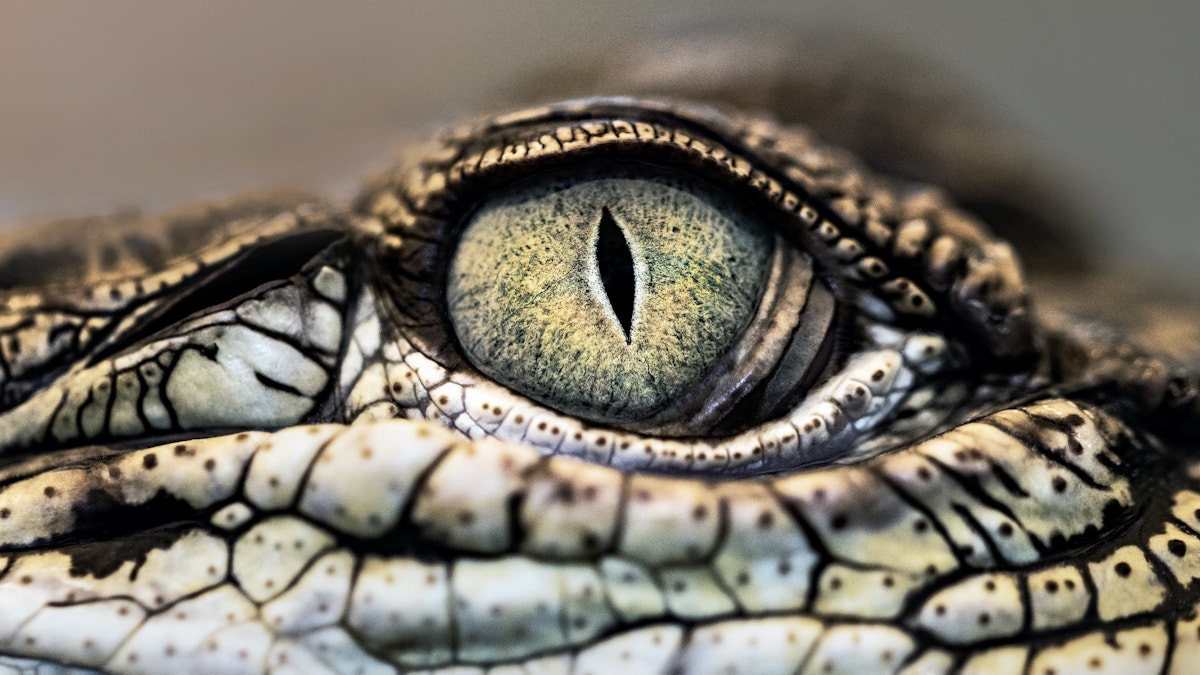
Could it have been a croc?
Published 5:00am 25 January 2023

By Dr Daryl McPhee, Associate Professor of Environmental Science - Bond University
What a surprise to see the report of a crocodile at Myora on North Stradbroke Island (Minjerribah)! It was reported by a traditional owner who operates an eco-tourism business on the island.
There are two species of crocodiles in Australia. The estuarine crocodile Crocodylus porosus and the freshwater crocodile Crocodylus johnstoni.
As we all know, the estuarine crocodile is dangerous to people, but the risk of being killed by one is exceptionally low. Male estuarine crocodiles can grow to up to 6m in length while females have a noticeable smaller maximum size of about 3m. This makes them the largest of the living crocodile species.
In contrast, the freshwater crocodile is much smaller with males and females reaching a maximum size of 3m and 2m, respectively. Freshwater crocodiles are not implicated in human fatalities.
The freshwater crocodile only occurs in northern Australia while the estuarine crocodile occurs in northern Australia, Vanuatu, Solomon Islands, Papua New Guinea and many parts of South East Asia. It is possibly locally extinct in several parts of its former range including in China, Seychelles, Cambodia and Vietnam.
There has been a clear increase in their population in Australia since their protection in the early 1970s. While there is not a precise estimate of the number of estuarine crocodiles in Australia, it is estimated at between 100,000 and 200,000.
Estuarine crocodiles have a temperature tolerance between approximately 26 and 33 degrees Celsius. They regulate body temperature within optimal limits by moving between land and water to heat and/or cool themselves.
The gender of estuarine crocodile hatchlings is determined by temperature. At 28–30 degrees all hatchlings will be female, at 30–32 degrees most hatchlings are male, and at greater than 33 degrees most hatchlings are female. This means that the impacts of a changing climate can impact the gender ratio of this species which may in the long term impact the size of the population.
Estuarine Crocodiles are mostly nocturnal but will also hunt during the day should an opportunity arise. The estuarine crocodile is an opportunistic apex predator, but they also scavenge. They can go months without eating. For hunting, the estuarine crocodile relies on stealth, moving underwater close to the potential prey before lunging at it. Estuarine crocodiles may store remains of their uneaten food underwater or in mangroves and return to finish consuming it later.
Despite their name, estuarine crocodiles do occur in freshwater areas and may also be encountered in the ocean. When they are in the ocean they can move large distances, often over 100km, and they conserve energy by travelling with the ocean currents.
|It is this ability to move large distances which means they can turn up well outside of what is their normal geographic range.|

Why crocs travel
Crocodiles compete fiercely with each other for territory, with dominant males in particular occupying the best locations and they can force less dominant animals to move around and find other more marginal habitat.
On the Queensland east coast, the recognised range of the estuarine crocodile is from Gladstone north to Cape York. On the Queensland east coast, the highest density of estuarine crocodiles occurs in Lakefield (Rinyirru) National Park. Several sightings a year are recorded in the Mary River, Hervey Bay and the Great Sandy Straits. However, some of these sightings are likely to be dugong.
This is of course leads us to the topic of the crocodile sighting at Myora on North Stradbroke Island (Minjerribah). While running a kayaking tour, a traditional owner reported seeing a crocodile there. A subsequent alleged sighting at Dunwich near the ferry terminal was identified as a dugong and not a crocodile.
So, is it feasible that a crocodile can find its way into Moreton Bay?
Yes. A crocodile was found in the Logan River in 1905. There are also old historical reports further south of Moreton Bay in the Tweed River and in rivers of northern NSW. Such sightings are extremely rare of course.
Can crocodiles successfully establish a population in Moreton Bay over the next couple of decades? No. The temperature is not sufficiently high enough throughout the year to maintain populations.
As time progresses without clear verification of the presence of the crocodile, the most likely explanation becomes that the animal spotted was a dugong which are common around North Stradbroke Island. If it is never found, Moreton Bay now has its very own Loch Ness Monster – the Straddie Croc!
Related Stories
Top Stories

Info sessions for North Pine dam
Drop-in community sessions are being held over the next nine days for those wanting more information about Seqwater’s dam improvement program.


Popular Stories

Moreton Bay artists shine in 2024 Brisbane Portrait Prize
Four Moreton Bay artists are among the 64 finalists chosen from almost 600 entries in this year’s Brisbane Portrait Prize. See their works...

'Priority' given for Waraba plans
Waraba, formerly known as Caboolture West, will be the 36th Priority Development Area in Queensland, unlocking land for 30,000 new homes and an estimated 70,000 new residents.

Trai Fuller: ‘It’s always felt like home’
Praised by Wayne Bennett for his courageous style of play and loved by long-time Dolphins fans, Trai Fuller has locked in a two-year deal with the club he calls home. He tells us why it means so much to him













